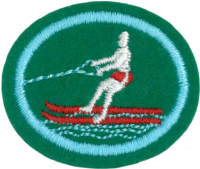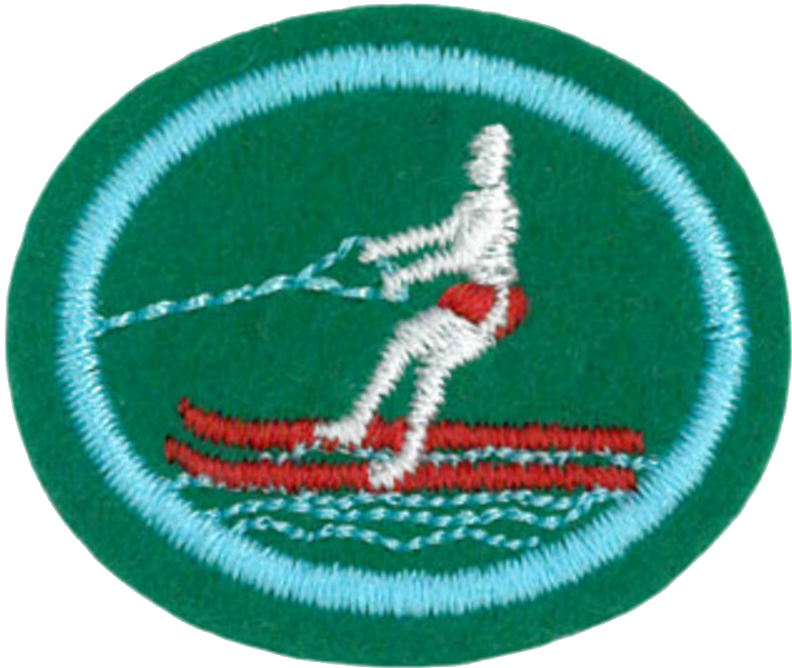Difference between revisions of "AY Honors/Water Skiing/Answer Key/fr"
From Pathfinder Wiki
< AY Honors | Water SkiingAY Honors/Water Skiing/Answer Key/fr
(Created page with "</noinclude> <!-- 3. Savoir faire les signes de la main pour les cas suivants: -->") |
(Created page with "</noinclude> <!-- 4. Chausser les skis en eau profonde. Exécuter un démarrage en eau profonde sur les 2 skis et avec toute la longueur de la corde. -->") |
||
| Line 99: | Line 99: | ||
<noinclude></noinclude> | <noinclude></noinclude> | ||
| − | + | {{clear}} | |
| − | |||
| − | |||
| − | + | {{clear}} | |
| − | |||
| − | |||
| − | + | {{clear}} | |
| − | |||
| − | |||
| − | + | {{clear}} | |
| − | |||
| − | |||
| − | + | {{clear}} | |
| − | |||
| − | |||
| − | + | <noinclude></noinclude> | |
| − | <noinclude | ||
| − | |||
{{CloseReq}} <!-- 3f --> | {{CloseReq}} <!-- 3f --> | ||
{{CloseReq}} <!-- 3 --> | {{CloseReq}} <!-- 3 --> | ||
{{ansreq|page={{#titleparts:{{PAGENAME}}|2|1}}|num=4}} | {{ansreq|page={{#titleparts:{{PAGENAME}}|2|1}}|num=4}} | ||
| − | <noinclude> | + | <noinclude></noinclude> |
| − | </noinclude> | + | <!-- 4. Chausser les skis en eau profonde. Exécuter un démarrage en eau profonde sur les 2 skis et avec toute la longueur de la corde. --> |
| − | <!-- 4. | ||
| − | |||
| − | |||
| − | + | <noinclude></noinclude> | |
| − | <noinclude | ||
| − | |||
{{CloseReq}} <!-- 4 --> | {{CloseReq}} <!-- 4 --> | ||
{{ansreq|page={{#titleparts:{{PAGENAME}}|2|1}}|num=5}} | {{ansreq|page={{#titleparts:{{PAGENAME}}|2|1}}|num=5}} | ||
| − | <noinclude> | + | <noinclude></noinclude> |
| − | </noinclude> | + | <!-- 5. Traverser avec succès les deux sillages. --> |
| − | <!-- 5. | ||
| − | |||
| − | |||
<noinclude></noinclude> | <noinclude></noinclude> | ||
{{CloseReq}} <!-- 5 --> | {{CloseReq}} <!-- 5 --> | ||
{{ansreq|page={{#titleparts:{{PAGENAME}}|2|1}}|num=6}} | {{ansreq|page={{#titleparts:{{PAGENAME}}|2|1}}|num=6}} | ||
| − | <noinclude> | + | <noinclude></noinclude> |
| − | </noinclude> | + | <!-- 6. Identifier les termes suivants: --> |
| − | <!-- 6. | + | <noinclude></noinclude> |
| − | <noinclude | ||
| − | |||
{{ansreq|page={{#titleparts:{{PAGENAME}}|2|1}}|num=6a}} | {{ansreq|page={{#titleparts:{{PAGENAME}}|2|1}}|num=6a}} | ||
| − | <noinclude> | + | <noinclude></noinclude> |
| − | </noinclude | ||
| − | |||
| − | |||
| − | |||
| − | + | <noinclude></noinclude> | |
| − | <noinclude | ||
| − | |||
{{CloseReq}} <!-- 6a --> | {{CloseReq}} <!-- 6a --> | ||
{{ansreq|page={{#titleparts:{{PAGENAME}}|2|1}}|num=6b}} <!--T:27--> | {{ansreq|page={{#titleparts:{{PAGENAME}}|2|1}}|num=6b}} <!--T:27--> | ||
| − | <noinclude> | + | <noinclude></noinclude> |
| − | </noinclude | ||
| − | |||
| − | + | {{clear}} | |
| − | |||
| − | |||
| − | + | <noinclude></noinclude> | |
| − | <noinclude | ||
| − | |||
{{CloseReq}} <!-- 6b --> | {{CloseReq}} <!-- 6b --> | ||
{{ansreq|page={{#titleparts:{{PAGENAME}}|2|1}}|num=6c}} <!--T:29--> | {{ansreq|page={{#titleparts:{{PAGENAME}}|2|1}}|num=6c}} <!--T:29--> | ||
| − | <noinclude> | + | <noinclude></noinclude> |
| − | </noinclude | ||
| − | |||
| − | |||
| − | + | <noinclude></noinclude> | |
| − | <noinclude | ||
| − | |||
{{CloseReq}} <!-- 6c --> | {{CloseReq}} <!-- 6c --> | ||
{{ansreq|page={{#titleparts:{{PAGENAME}}|2|1}}|num=6d}} <!--T:30--> | {{ansreq|page={{#titleparts:{{PAGENAME}}|2|1}}|num=6d}} <!--T:30--> | ||
| − | <noinclude> | + | <noinclude></noinclude> |
| − | </noinclude | ||
| − | |||
| − | + | {{clear}} | |
| − | |||
| − | |||
| − | + | <noinclude></noinclude> | |
| − | <noinclude | ||
| − | |||
{{CloseReq}} <!-- 6d --> | {{CloseReq}} <!-- 6d --> | ||
{{CloseReq}} <!-- 6 --> | {{CloseReq}} <!-- 6 --> | ||
| − | <noinclude> | + | <noinclude></noinclude> |
| − | </noinclude> | + | ==Références== |
| − | == | ||
| − | |||
| − | + | <noinclude></noinclude> | |
| − | |||
| − | |||
| − | |||
| − | <noinclude | ||
| − | |||
{{CloseHonorPage}} | {{CloseHonorPage}} | ||
Latest revision as of 19:47, 22 July 2022
1
Avoir la distinction Natation II.
Pour obtenir des conseils et des instructions, consultez Natation II.
2
Connaître et mettre en pratique les règles de sécurité suivantes:
2a
Ne jamais skier de nuit.
2b
Ne jamais skier pendant une tempête.
2c
Toujours porter un gilet de ski lorsqu’on ski.
2d
Vérifier que la boucle du gilet est bien attachée en position de sécurité.
2e
Vérifier que la corde de ski est en bon état.
2f
Vérifier que les fixations des skis sont en bon état.
2g
Avoir un rétroviseur sur le bateau de ski.
2h
Rester éloigné de tout objet, tels d’autres skieurs, nageurs, le port, objets flottants.
2i
Lâcher la corde quand on tombe.
2j
Après une chute, faire un signe de la main pour indiquer que tout va bien.
2k
Ne pas se tenir debout dans le bateau lorsque celui-ci est en marche.
3
Savoir faire les signes de la main pour les cas suivants:
3a
Ralentissez
3b
La vitesse convient
3c
Accélérez
3d
On retourne au port
3e
Stop
3f
Tournez
4
Chausser les skis en eau profonde. Exécuter un démarrage en eau profonde sur les 2 skis et avec toute la longueur de la corde.
5
Traverser avec succès les deux sillages.
6
Identifier les termes suivants:
6a
Ski double
6b
Ski de slalom
6c
Hydroglisseur
6d
Ski à disque


